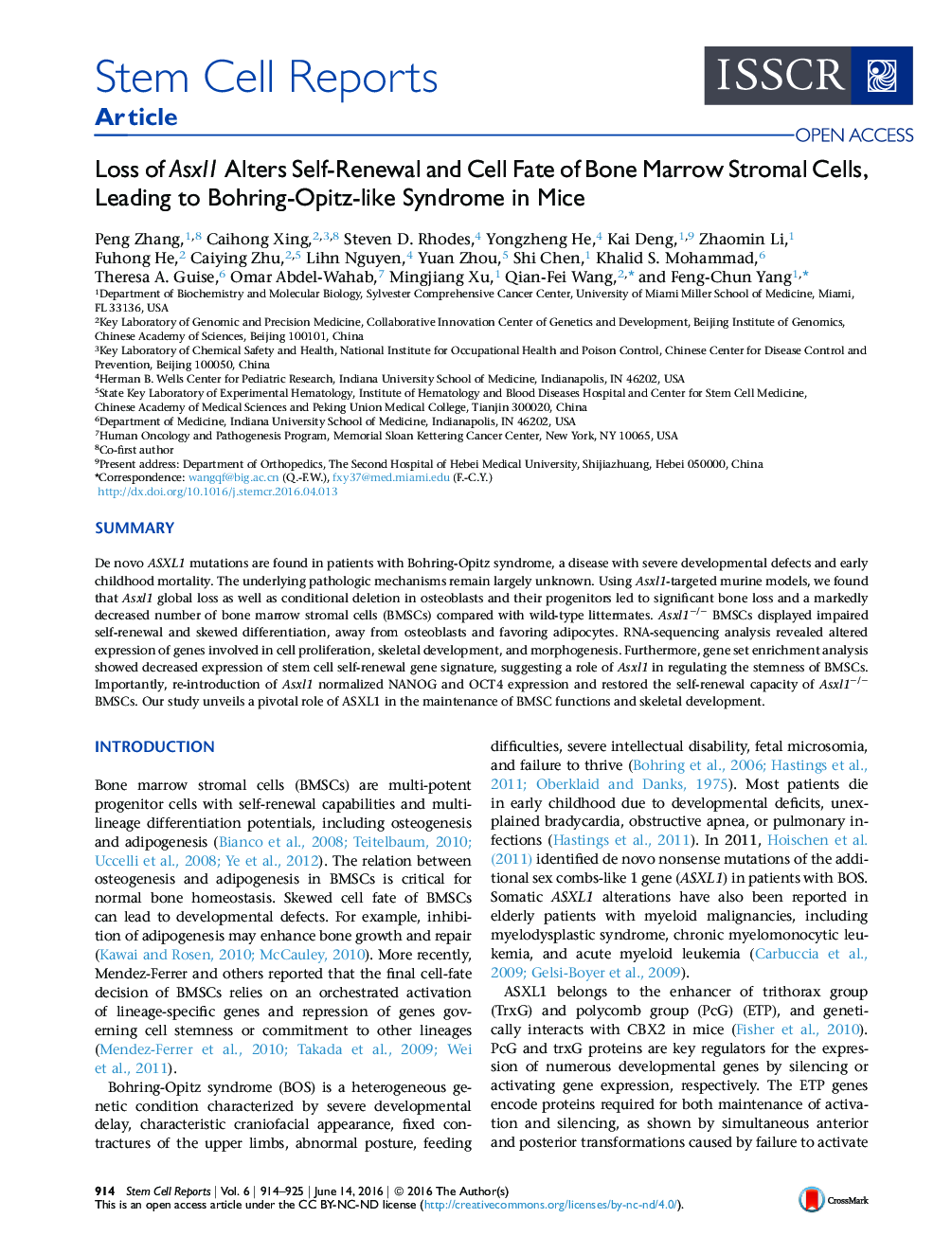| Article ID | Journal | Published Year | Pages | File Type |
|---|---|---|---|---|
| 2093264 | Stem Cell Reports | 2016 | 12 Pages |
•Asxl1 loss impairs BMSC self-renewal and cell fate•Asxl1 loss leads to dramatic bone loss•Asxl1 loss alters the expression of genes critical for cell fates of BMSCs•Re-introducing Asxl1 restores self-renewal and lineage commitment in Asxl1−/− BMSCs
SummaryDe novo ASXL1 mutations are found in patients with Bohring-Opitz syndrome, a disease with severe developmental defects and early childhood mortality. The underlying pathologic mechanisms remain largely unknown. Using Asxl1-targeted murine models, we found that Asxl1 global loss as well as conditional deletion in osteoblasts and their progenitors led to significant bone loss and a markedly decreased number of bone marrow stromal cells (BMSCs) compared with wild-type littermates. Asxl1−/− BMSCs displayed impaired self-renewal and skewed differentiation, away from osteoblasts and favoring adipocytes. RNA-sequencing analysis revealed altered expression of genes involved in cell proliferation, skeletal development, and morphogenesis. Furthermore, gene set enrichment analysis showed decreased expression of stem cell self-renewal gene signature, suggesting a role of Asxl1 in regulating the stemness of BMSCs. Importantly, re-introduction of Asxl1 normalized NANOG and OCT4 expression and restored the self-renewal capacity of Asxl1−/− BMSCs. Our study unveils a pivotal role of ASXL1 in the maintenance of BMSC functions and skeletal development.
Graphical AbstractFigure optionsDownload full-size imageDownload as PowerPoint slide
